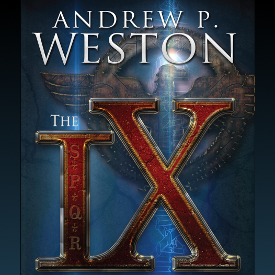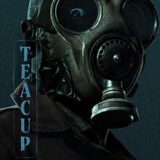$1995.00. For 15 pages. That’s how much a copy of A. E. van Vogt’s speech, Tomorrow on the March, goes for today. He delivered this speech as the guest of honor at PACIFICON, July 4, 1946. I have to wonder what he would have to say about that today. That would be quite a chunk of change in that day. (For a copy of a speech, it’s quite a chunk of change today.) I’m disappointed that I know of no one who has a copy of this speech. It shall remain unread … by me, anyway. You know how it goes. If you can’t have something, you want it even more. I shall remain in ignorance … temporarily, I should hope. If you’ve read it, please comment.
I recently read an article by writer John C. Wright who poses the question: Why isn’t A. E. van Vogt in The Big Three of Science Fiction instead of Arthur C. Clarke? Since he makes some interesting points in his argument, I’ll just recommend a redirect to Wright’s article for you. In summary, however, van Vogt worked with John W. Campbell, Jr. who edited both Robert Heinlein’s and Isaac Asimov’s works. He was, in a sense, part of The Team, a member of a triumvirate. Unlike Clarke.
Van Vogt was on that cusp of glowing goldness with SF’s luminous beginnings. And admittedly, there’s an interesting volume on the letters exchanged by van Vogt, Asimov, and Campbell. An issue that Mr. Wright did not addressed is that van Vogt is already a member of The Big Four of the Golden Age of Science Fiction. That’s a pretty nice crown of laurels to already be wearing, I’d say, but you be the judge.
Van Vogt, judged harshly by Damon Knight, was described as “…he is a pygmy … operate[ing] an overgrown typewriter.” Philip K. Dick defends his mentor: “…he made me appreciate a mysterious chaotic quality in the universe which is not to be feared.” Paul D. Fillippo says: “Van Vogt knew precisely what he was doing in all areas of his fiction writing.” Knight, the founder of the Science Fiction Writers of America, loathed van Vogt, demolishing his career in the 1950s.
Van Vogt began his writing in 1939 and while credited with numerous individual works, there are four noteworthy series.
The Slan Series: became a series when Kevin J Anderson produced the sequel, Slan Hunter. (Anderson, incidentally, is also a Writers of the Future contest judge.) In the original work, Slan, the hero’s (Jommy Cross) mother is mobbed, arrested, and dies early on in the story. As a Slan (mutant), humans (normals) are jealous of his abilities: telepathy, physical prowess, and heightened intelligence. His romantic interest is also a Slan and, he discovers, is the daughter of Earth’s enigmatic dictator … who, despite having publicly sworn to eliminate the Slan threat, is secretly one of them.
The Isher Series: Three short stories, published in 1941, 1942, & 1949, comprise The Weapon Shops of Isher. In The Weapon Makers (serialized in 1943), an immortal, Robert Hedrock, originally creates the weapon shops as a libertarian counter to an imperial world government. These shops also provide an alternative legal system to the government of the empress, Innelda Isher, becoming the single obstruction to totalitarianism.
Published in the midst of World War II, this SF work stands out as a political essay that clearly favors the right to keep and bear arms. The National Rifle Association sometimes cites the work and various writers have made inference to “The Shop,” or some reference to the Weapons of Isher in their own works.
The Null-A Series: In The World of Null-A, Gilbert Gosseyn, seeks to join a caste of superior humans who govern humanity. A massive Machine, that evaluates his suitability for governing, tests him, but he discovers his memories are false. While searching for answers, he discovers that humans belong to a galactic society that is home to an interstellar empire bent on eliminating the Null-As (non-Aristotelian logics) from Sol system, his superior grey matter allows for telekinesis, and that he has multiple bodies who assume his identity whenever he dies, granting him a peculiar kind of immortality.
In The Players of Null-A, Gosseyn’s adventures continues with his mind leapfrogging from one of his clone bodies to the body of prince Ashargin. His wife, Patricia, is also Reesha, sister and the betrothed to Enro, his captor. She is also masqurading as the President of Earth’s daughter. Enro the Red, the dictator of the Greatest Empire, rules an interstellar consortium bent on conquering the Null-A utopia on Venus.
Null-A 3 concludes Gosseyn’s interstellar adventures by van Vogt, but John C. Wright, mentioned above, adds Null-A Continuum to this series.
Series book reviewers run about fifty-fifty on thumbs up or down. You might suspect that eeny, meeny, or moe is the preferred decision making process. There are problems with superflous characters, unresolved plot lines, and you’ll no doubt note some shoddy spots without prompting from me or anybody else.
The Clane Series: The Empire of the Atom and The Wizard of Linn are central to this series, placed in a Roman Empire setting. The series begins with A Son is Born; a mutant child (who later becomes Clane), is saved by a priest. He becomes essential to his father’s interplanetary battles and political maneuverings. Humanity’s star traveling are in the past and the feudal remnant has degenerated into interplanetary wars with Mars, Venus, and Europa. Van Vogt wrote The Empire of the Atom as a series of short stories in 1946 and 1947; they were later collected into a novel format.
In The Wizard of Linn, the alien Riss, who destroyed Earth’s previous stellar civilization, return and Lord Clane must devise some means to save Earth from their onslaught.
I suppose a summary of van Vogt should conclude that he was a magazine editor’s fabulous dream come true. His stories were appealing to a large number of readers and, quite importantly, he was fast and productive. If his works seem to suffer from his haste, he was no doubt suffering from deadline-itis. I imagine that this pressure was probably why he was so prolific. From my own limited experience in writing, I know how hard it can be to go back over a piece and rework it later … when the passion for an idea has died. Whatever inspiration got you into a story can evaporate when you go back a year, or more, later, and try to rework the magic that was there in the beginning.
He’s not for everyone, but I think quite a few of you will still find his collected works a rich treasure trove worth exploring.


















